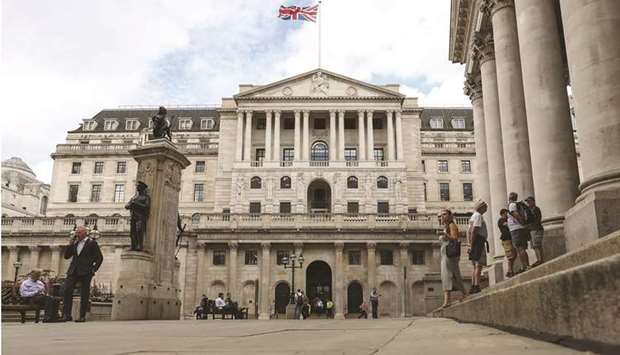The Bank of England set out how it would ease the economy off the huge support provided during the Covid-19 pandemic and said a “modest” tightening of policy lay ahead, but it kept its stimulus at full speed despite a jump in inflation.
Only one of the BoE’s eight monetary policy-makers, Michael Saunders, voted to reduce the size of its bond-buying programme which remains unchanged at £895bn ($1.25tn). The vote to hold its benchmark interest rate at a historic low of 0.1% on was unanimous, as expected.
With more than 70% of adults in Britain now fully vaccinated against Covid-19 and most social-distancing rules lifted, Britain’s economy has recouped much of its 10% crash of 2020, prompting the BoE to spell out how it plans to rein in its stimulus, when the time comes.
It said it would start reducing its stock of bonds when its policy rate reaches 0.5% by not reinvesting the proceeds of maturing debt, as long as that made sense for the economy.
The BoE would then consider actively selling down holdings when the rate reaches at least 1%. Previous guidance, from June 2018, said the BoE would not start to unwind bond purchases until Bank Rate was near 1.5%. Governor Andrew Bailey said a lot had changed in the past three years and “if we stuck with 1.5%, when you look at the market curve, that would be tantamount to saying that we would actually never reduce the (missing word) balance sheet as things stand today.”
The Monetary Policy Committee said “some modest tightening of monetary policy over the forecast period is likely to be necessary” over its three-year forecast period. Sterling was little changed from its level against the US dollar and the euro after the announcement.
British government bond prices were slightly lower. Investors continued to price in a first 15 basis-point rise in Bank Rate in about a year’s time.
“The Bank has given its fair share of false signals on this in the past, but the broad messaging is consistent with a number of other global central banks that are preparing markets for the very gradual tapering of monetary support,” Luke Bartholomew, an economist at Aberdeen Standard Investments, said.
The Federal Reserve’s top policymakers are also showing signs of a split about how quickly the US central bank might need to scale back its quantitative easing plan. Bailey stressed the BoE would not hesitate to act if the outlook for inflation was in jeopardy. Bailey said unemployment was no longer expected to rise when finance minister Rishi Sunak’s job-protecting furlough scheme is phased out at the end of September, and the key challenge for the economy was instead whether employers could fill vacancies.
A big jump in wages could add to British inflation which hit 2.5% in June and which the BoE said was now on course to rise even further above its 2% target in the months ahead, touching 4.0% in late 2021 and early 2022, its highest in 10 years.
In May, it had forecast a peak of 2.5%. But the BoE said it still thought the jump in inflation would prove to be temporary.
It forecast that inflation in two years’ time would be just above its 2% target — a stance investors typically take as a signal that rates might rise slightly more than has been priced in by markets.
But BoE deputy governor Ben Broadbent said the BoE’s inflation forecast should not be read as a policy signal, and noted that inflation was below target in three years’ time.
The BoE said it still expected Britain’s economy would grow by 7.25% in 2021, unchanged from its May forecast, one of the fastest expansion rates among big, rich economies. It raised slightly its estimate for growth in 2022 to 6% from the previous forecast of 5.75%.
The MPC is due to return to its full strength of nine members once it appoints a new chief economist.

The Bank of England building in the City of London. The BoE set out how it would ease the economy off the huge support provided during the Covid-19 pandemic and said a ‘modest’ tightening of policy lay ahead, but it kept its stimulus at full speed despite a jump in inflation.


